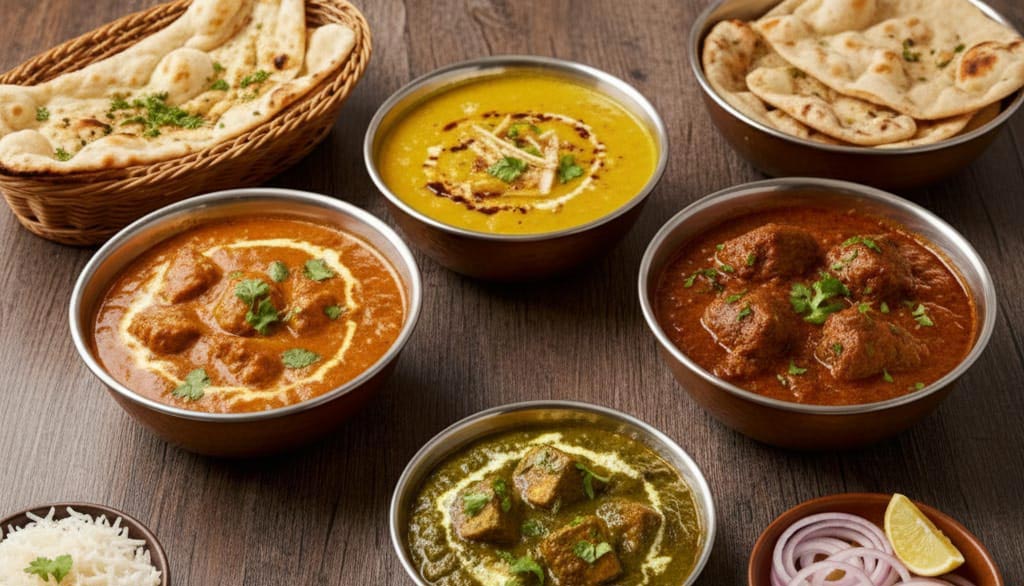
You know that feeling when someone's cooking dal in the next House and suddenly your whole day changes? That's what happens when you stumble upon proper indian restaurants that actually get it. Not the fancy places with weird fusion nonsense, but the ones where aunties in the kitchen know exactly how much haldi goes into everything without measuring.
Half the food places to eat these days think slapping some curry powder on chicken makes it authentic. Wrong. Dead wrong. Real home-style cooking isn't about following recipes from Google - it's about that pinch of this, handful of that, and cooking until it "looks right" mentality that takes years to master.
Forget everything fancy on the menu. Dal tadka tells you everything about a kitchen. Can they make lentils taste like liquid heaven? Then they know what they're doing.
The real deal starts with properly cooked lentils - not mushy, not hard, just right. Then comes the tadka, and this is where amateurs mess up. Ghee has to be hot enough to make cumin seeds dance, but not so hot they burn. Timing matters. Temperature matters. The sizzle when tadka hits dal should sound like victory.
Good indian restaurants know this. Bad ones just mix everything together and call it a day. The difference? One tastes like someone's mother made it. The other tastes like disappointment.
Anyone claiming they can cook should try making perfect aloo gobi. Sounds simple? Ha. Potatoes that are cooked through but not falling apart. Cauliflower that's tender without being mushy. Spices that coat everything without overpowering.
Most people mess this up because they're impatient. They crank up heat, add water when things stick, then wonder why it tastes bland. Real aloo gobi needs patience. Low heat. Constant attention. And absolutely no shortcuts.
The places that nail it? You can taste the difference immediately. Every potato piece has absorbed flavors. Every cauliflower floret has that slight caramelization. No excess water pooling at the bottom. Just pure, concentrated comfort food.
Rajma separates serious indian food places from pretenders. This isn't something you whip up in thirty minutes. Beans need overnight soaking. Proper cooking takes hours. The gravy needs time to develop that deep, rich color and flavor.
Rushed rajma tastes exactly like what it is - rushed. Hard beans floating in watery tomato sauce. Proper rajma? Beans are creamy inside, gravy is thick enough to coat rice properly, and every spoonful tastes like Sunday afternoon at home.
The secret isn't really secret - it's just time and patience. Something most commercial kitchens won't invest in unless they actually care about food over profit.
Palak paneer shows whether a kitchen respects vegetables or just throws them around. Fresh spinach, blanched properly to keep that bright green color. Pureed smooth, not chunky. Paneer that's soft, not rubber.
Too many places use frozen spinach or overcook fresh ones until they're dark and bitter. Others add too much cream to hide mistakes. Real palak paneer doesn't need hiding - the spinach taste comes through clean and fresh, with just enough cream to make it rich without drowning everything.
And please, for the love of all that's holy, stop making paneer so hard it bounces. Fresh paneer should be soft enough to cut with a fork.
Everyone thinks they love chole until they taste the real thing. Properly cooked chickpeas that hold their shape but aren't hard. Gravy that's thick, tangy, and has that deep reddish color from properly cooked onions and tomatoes.
Most places take shortcuts with canned chickpeas and pre-made masala. You can taste the difference immediately. Real chole starts with dried chickpeas, soaked overnight, and cooked properly. The masala base gets cooked until oil separates. No shortcuts, no compromises.
Good indian restaurants don't need fancy decor or Instagram-worthy plating. They need cooks who understand that great food takes time. Places where someone's actually tasting the food while cooking. Where spices get roasted fresh. Where shortcuts aren't taken just to save twenty minutes.
Look for places that smell right when you walk in. Not overpowering, just that warm, homey smell of real cooking happening. Avoid anywhere that has fifty different curries on the menu - nobody can do everything well.
Course, sometimes you want to try making this stuff yourself. Good luck finding proper ingredients at regular grocery stores. Half the spices are stale, the vegetables are wrong varieties, and don't get started on the sorry state of most paneer available.
This is where places like Triveni Supermarket become lifesavers for home cooks. Fresh spices that actually smell like something. Proper vegetables. Ingredients that don't require workarounds or substitutions. Because authentic cooking starts with authentic ingredients, not clever hacks.
These five curries aren't just food places to eat staples - they're tests. Tests of patience, skill, and respect for tradition. The indian restaurants that get them right understand something important: comfort food can't be faked, rushed, or cleverly substituted.
Every proper home-style curry tells a story. Not some made-up marketing story, but the real story of cooks who learned by watching, tasting, adjusting, and caring enough to do things properly. That's what separates memorable meals from forgettable ones, and why these five curries continue to be the benchmark for authentic indian food everywhere.